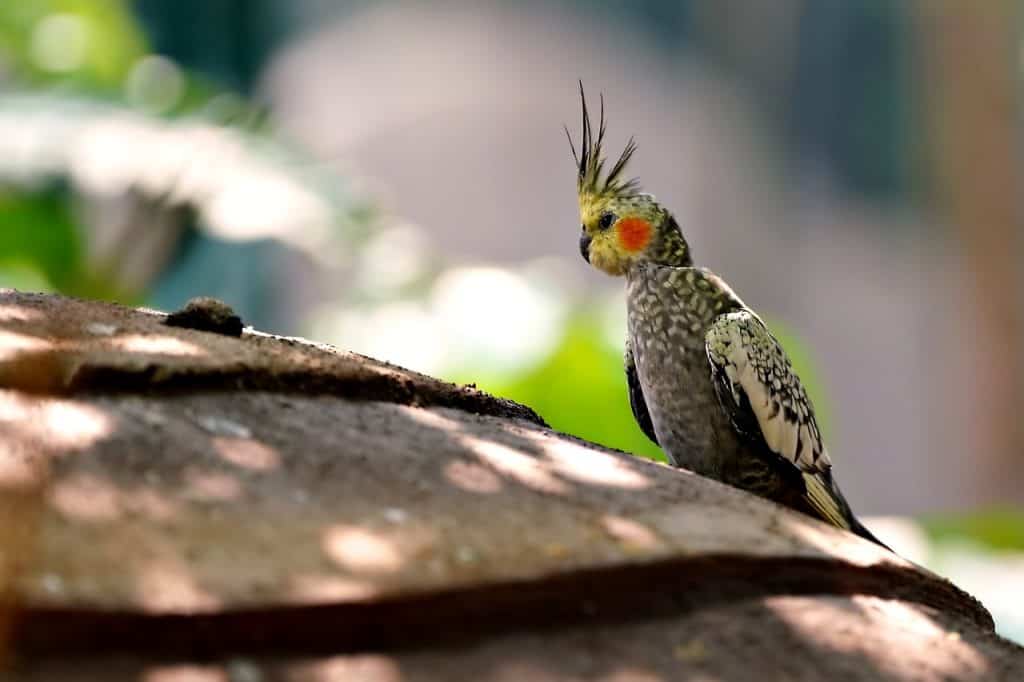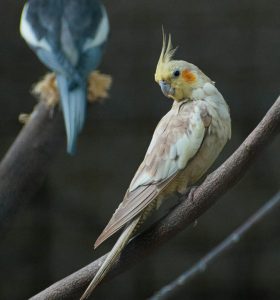Bathing your cockatiel isn’t just a chore; it’s a vital part of their grooming that keeps their feathers bright and healthy. If you’re wondering how to bathe your cockatiel, you’re not alone. Many pet owners are initially puzzled about the best way to approach this task. It’s essential to understand that cockatiels, like many birds, have unique needs when it comes to bathing.
Understanding the Benefits of Bathing Your Cockatiel
Bathing your cockatiel isn’t just about keeping them clean; it’s crucial for their overall health and well-being. Let’s dive into how regular baths benefit your feathered friend.
Promotes Healthy Feathers
A key benefit of bathing your cockatiel is the maintenance of healthy feathers. Regular exposure to water helps remove dirt and reduces feather dust, common allergens in your home. Clean feathers aren’t just visually appealing; they’re also more effective in temperature regulation and make flying easier for your bird. When you use a spray bottle to gently mist your cockatiel, it mimics the natural rainfall they would experience in their native habitats. This not only cleans their feathers but also encourages preening, where your bird will realign its feathers, keeping them in optimal condition.
Supports Natural Grooming Behavior
Bathing stimulates your cockatiel’s natural grooming behaviors. In the wild, these birds experience frequent rainfalls, prompting regular preening and feather maintenance. By providing a shallow dish of lukewarm water or using a fine mist spray, you support these instinctual practices.
Preening is vital as it distributes natural oils across their feathers, ensuring flexibility and waterproofing, which are essential for the bird’s health. Additionally, this activity is a stress reliever for cockatiels and promotes bonding if you participate in the grooming process by gently drying them with a warm towel or setting them near a sunny window to dry naturally.
Preparing for Your Cockatiel’s Bath
Preparing your cockatiel for a bath is vital for its health and happiness. The following details will guide you through choosing the optimal time and accessories for bathing your pet bird.
Choosing the Right Time and Frequency
Bathing your cockatiel too frequently or infrequently can affect its feather health. The best time to bathe your cockatiel is in the morning, allowing it adequate time to dry before the cooler evening temperatures set in. As a general rule, aim to offer a bath once a week to maintain proper hygiene without over-bathing, which might strip natural oils from the feathers. However, observe your cockatiel’s behavior; some may prefer more frequent baths. During warmer months, increase the frequency if your bird seems to enjoy water or appears dirtier than usual.
Selecting Safe Bathing Accessories
Choosing the right tools can make bath time enjoyable and safe for your cockatiel. Essential accessories include:
- Water Dish: A shallow dish with lukewarm water is ideal. Ensure it’s stable and shallow enough to prevent drowning risks,
- Spray Bottle: If your bird prefers a gentle shower, use a spray bottle set to fine mist. This mimics natural rain, providing a familiar bathing experience.
- Shower Perch: For cockatiels that enjoy showering with you, a shower perch can be installed in your bathroom. Ensure that the water stream is gentle and the room is free from any drafts.
Always test the water temperature before introducing your cockatiel to the bath. Lukewarm water is best, as it prevents chilling or overheating. After bathing, remove excess water from your cockatiel’s feathers by gently toweling and allow your bird to dry in a warm, draft-free area, ensuring it isn’t exposed to direct sunlight through a window, which can be overly intense.
Bathing Techniques for Cockatiels
Proper bathing techniques for cockatiels can significantly enhance their health and happiness. Here, you’ll learn about various methods that ensure a safe and enjoyable bath time for your pet cockatiel.
Shower Methods
Introducing your cockatiel to a shower can be a delightful experience if done correctly. Use a shower perch to securely position your bird under a gentle stream of lukewarm water. Avoid direct spray from the shower head, as this can be too forceful and scare your bird. Instead, adjust the shower’s setting to a fine mist that mimics natural rain. Hold your cockatiel under the water briefly, ensuring that only its body and feathers get wet while protecting its face and eyes. After the shower, place your cockatiel in a warm room to dry naturally or use a towel gently.
Using Bathing Dishes
A shallow water dish can serve as an excellent bath space for your cockatiel. Fill the dish with lukewarm water, ensuring it’s only about an inch deep to prevent any risk of drowning. Place the dish in a safe, enclosed space within your bird’s reach. Observe as your cockatiel wades into the dish, splashes around, and ruffles its feathers to clean itself. Ensure the room is free of drafts to keep your pet warm post-bath. After bathing, remove the dish to discourage drinking dirty water or re-soaking.
Mist Spraying Technique
Misting provides a stress-free bathing option for pet birds, particularly cockatiels that are anxious around larger bodies of water. Use a spray bottle designated solely for your bird’s bathing. Fill it with warm water and adjust it to emit a gentle, fine mist. Spray the mist above your cockatiel, allowing the water droplets to softly fall onto the bird’s feathers.
This method helps simulate natural rain showers, encouraging preening and thorough cleaning without the bird becoming completely soaked. After misting, keep your cockatiel in a mildly warm environment to ensure gentle and quick drying.
After Bath Care for Cockatiels
Proper after-bath care is essential to ensure your cockatiel benefits fully from its bathing routine. Below, you’ll find effective methods for drying your bird and tips for handling it safely and comfortably once it’s clean.
Drying Techniques
- Air Drying in a Safe Environment: Place your cockatiel in a warm, draft-free area to air dry naturally. A sunny window where direct sunlight can help warm your bird but not overheat it provides an ideal spot. Ensure that the room’s temperature is comfortable, around 70-75°F (21-24°C), to prevent your cockatiel from catching cold.
- Using a Towel Gently: If your cockatiel isn’t afraid of being handled, you can gently wrap a soft towel around its body to absorb excess water. Avoid rubbing the feathers as this can damage them. Instead, pat softly and allow the bird to move freely within the confines of the towel.
- Blow-Drying on Low Heat: Occasionally, you might choose to blow-dry your cockatiel with a hair dryer set on a low, warm setting. Position the dryer at least 12 inches away from your cockatiel and use a light back-and-forth motion. Keep the dryer moving to avoid concentrating heat in one area, which can cause discomfort or burns.
- Ensure Handling is Stress-Free: Handle your cockatiel gently and ensure each interaction is soothing and calm. After a bath, your cockatiel might be more sensitive, making it essential to be extra cautious in your approach.
- Offer Comfort Options: After bathing, place your cockatiel back in its cage if it seems to be seeking safety or silence. Many cockatiels appreciate the security of their own space after bathing. Additionally, include familiar perches and soft cage bedding to enhance comfort.
- Monitor for Normal Behavior: Observe your cockatiel after the bath and drying process. Normal preening, vocalizing, and eating behaviors should resume soon after. If you notice any signs of stress or discomfort, make sure the room temperature is adequate and that there are no drafts causing the bird to be cold.
Alternative Bathing Methods
If your cockatiel is hesitant to bathe in a dish or under a shower, consider these alternative methods to keep it clean and healthy.
Leafy Greens Bath
Some cockatiels enjoy bathing in wet leafy greens, like kale or spinach. Place the wet greens in a shallow dish and let your bird explore and bathe as it would in the wild.
Humidity Chambers
For birds that are particularly water-shy, creating a humidity chamber can be a gentle way to encourage bathing. Place your bird’s cage in a bathroom while running a hot shower (without putting the bird directly under the water). The steam will help clean and moisturize your cockatiel’s feathers.
Understanding Cockatiel Bathing Preferences
Each cockatiel is unique, and their bathing preferences can vary. Pay attention to your bird’s behavior to tailor the bathing experience to its liking.
Observing Body Language
Watch for cues such as relaxed posture, open wings, and content vocalizations, which indicate your cockatiel is comfortable with the bathing method you’re using. Conversely, if your bird appears stressed, flaps its wings excessively, or tries to escape, try a different method.
Experimenting with Bathing Techniques
Try different bathing techniques, such as misting, showering, or using a water dish, to see which one your cockatiel prefers. Some birds may enjoy a combination of methods, so be flexible and attentive to your bird’s reactions.
Takeaways: How to bathe your cockatiel?
Bathing your cockatiel is more than just a routine—it’s a vital part of their health and happiness. By incorporating the outlined steps and tips you’ve learned you’ll not only help maintain their beautiful feathers but also deepen the bond between you and your feathered friend. Remember to keep the process gentle and stress-free to ensure your cockatiel enjoys each bathing experience and thrives in your care. With consistent practice you’ll find that this activity becomes a rewarding part of your routine offering benefits that are well worth the effort.
Other suggested articles:
How Long Can a Cockatiel Go Without Food?







